Physical Address
304 North Cardinal St.
Dorchester Center, MA 02124
Physical Address
304 North Cardinal St.
Dorchester Center, MA 02124
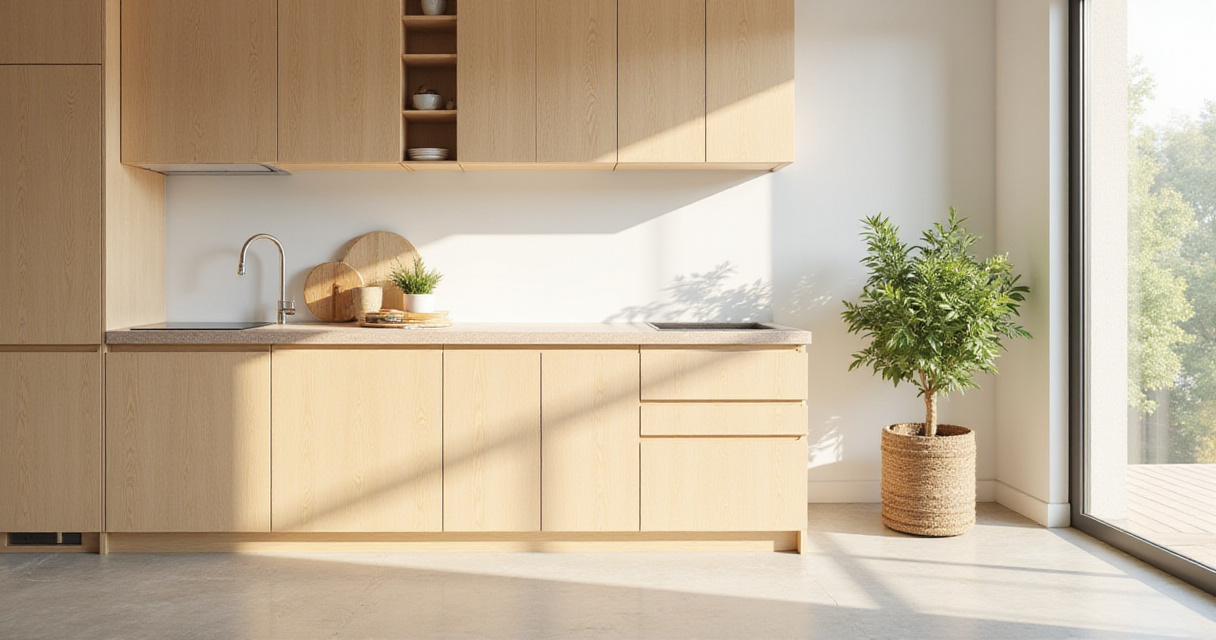
Discover 18 compelling reasons to choose organic kitchen cabinets for your home. From eco-friendly materials and healthier indoor air to timeless beauty and increased home value, these sustainable cabinets offer benefits that go far beyond aesthetics.
Have you ever walked into a kitchen and felt an immediate sense of calm and warmth? Not just from the people or food, but from the space itself? The kitchen serves as more than just a place to prepare meals—it’s where we gather, share stories, and create memories. And at the heart of this sacred space are the cabinets that frame our culinary adventures.
Organic kitchen cabinets offer something conventional options simply can’t: a harmonious blend of beauty, health, and environmental consciousness. Picture a kitchen where every drawer you open and every door you close connects you to nature’s artistry while protecting your family’s wellbeing. This isn’t just about aesthetics—it’s about creating a sanctuary that aligns with your values and nurtures both body and soul.
Here’s where it gets interesting—the choice of kitchen cabinets impacts far more than just how your kitchen looks. Let me show you another perspective on why organic kitchen cabinets deserve your consideration.
Organic kitchen cabinets stand as true environmental heroes in home design. Unlike conventional cabinets that often contribute to deforestation and indoor pollution, organic options prioritize sustainability at every step. These cabinets typically feature materials like reclaimed wood, bamboo, or Forest Stewardship Council (FSC) certified wood—all harvested with responsible forest management practices that preserve biodiversity and protect ecosystems.
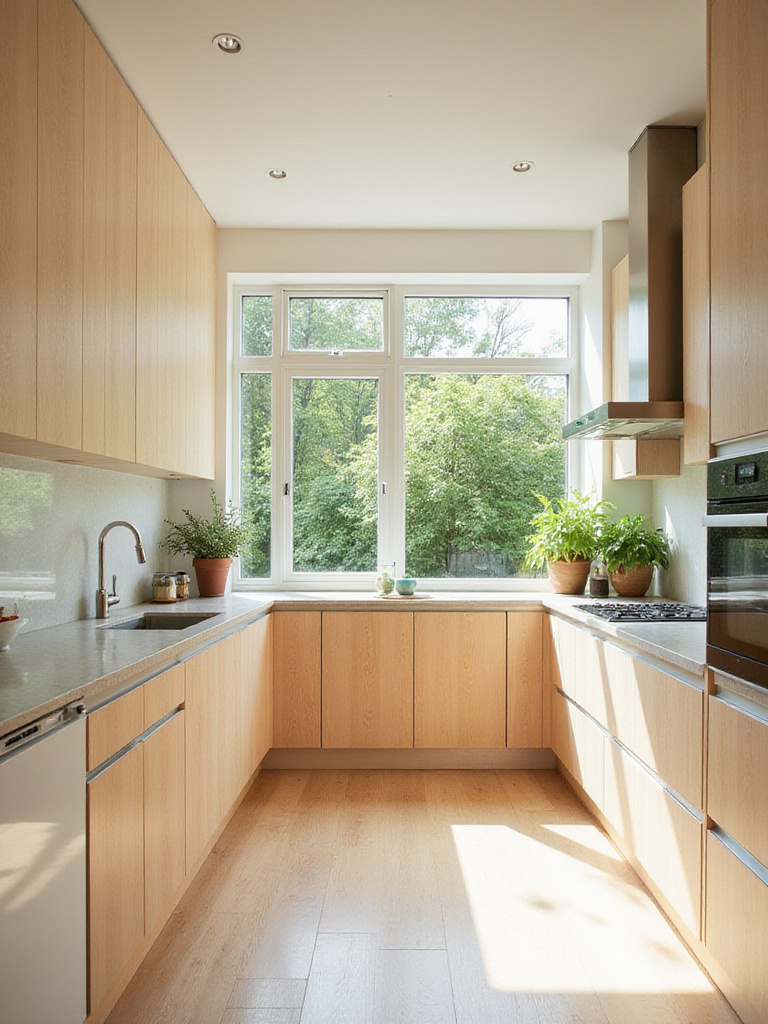
The eco-friendly nature extends beyond materials to the finishing process. While traditional cabinets rely on formaldehyde-based adhesives and VOC-laden paints, organic cabinets utilize non-toxic, low or zero-VOC finishes such as natural oils, waxes, and water-based paints. This commitment creates a safer home environment while reducing the environmental footprint of your kitchen renovation. Many organic cabinet manufacturers also embrace ethical labor practices and responsible waste management, completing their status as true green champions.
The ripple effects are enormous when you choose organic kitchen cabinets. Your decision supports sustainable forestry, reduces chemical emissions into the atmosphere, and encourages a shift toward more environmentally responsible manufacturing across the industry.
Conventional kitchen cabinets harbor a surprising array of hidden health hazards. Formaldehyde—a known carcinogen—lurks in the adhesives used in particleboard and MDF. Volatile organic compounds (VOCs) emanate from standard paints and finishes, while flame retardants can leach out over time, potentially disrupting hormone function. These chemicals contribute to indoor air pollution and can trigger headaches, respiratory irritation, allergic reactions, and even more serious long-term health issues with prolonged exposure.
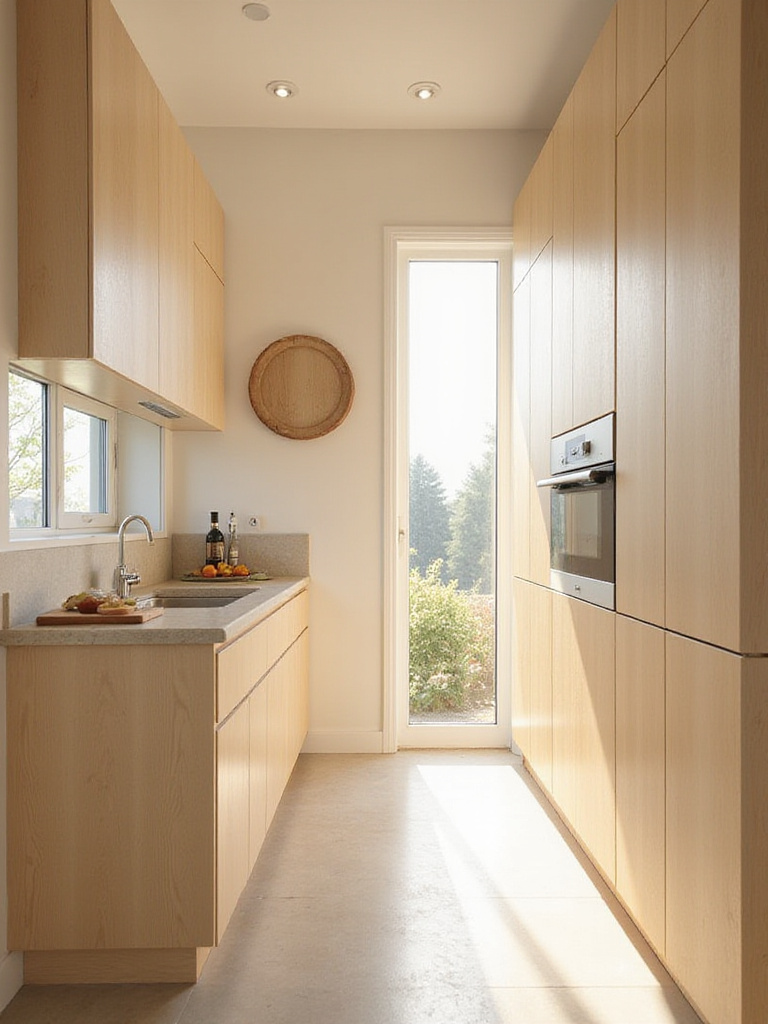
Organic kitchen cabinets offer a breath of fresh air—literally. Made with sustainable materials and non-toxic finishes, they significantly reduce harmful chemical exposure in your home. The commitment to formaldehyde-free plywood or solid wood construction eliminates a major source of indoor pollution, while natural oils and low-VOC finishes ensure minimal off-gassing. This conscious material selection creates cleaner indoor air, directly reducing the risk of respiratory problems and allergies—particularly beneficial for families with young children, individuals with sensitivities, and anyone seeking a truly healthy home environment.
What complicates this further is that many people don’t realize they’re being affected by these chemicals until symptoms become severe. By choosing organic kitchen cabinets, you’re making a proactive investment in your family’s long-term health and well-being.
Responsibly sourced wood represents a commitment to environmental stewardship that goes far beyond mere marketing buzzwords. For kitchen cabinets, this means selecting materials from forests managed with long-term sustainability in mind—prioritizing ecological balance, biodiversity conservation, and the wellbeing of local communities. Sustainable forest management includes responsible harvesting techniques, replanting efforts, and conservation measures to protect sensitive ecosystems. Certifications from organizations like the Forest Stewardship Council (FSC) provide independent verification of these responsible practices.
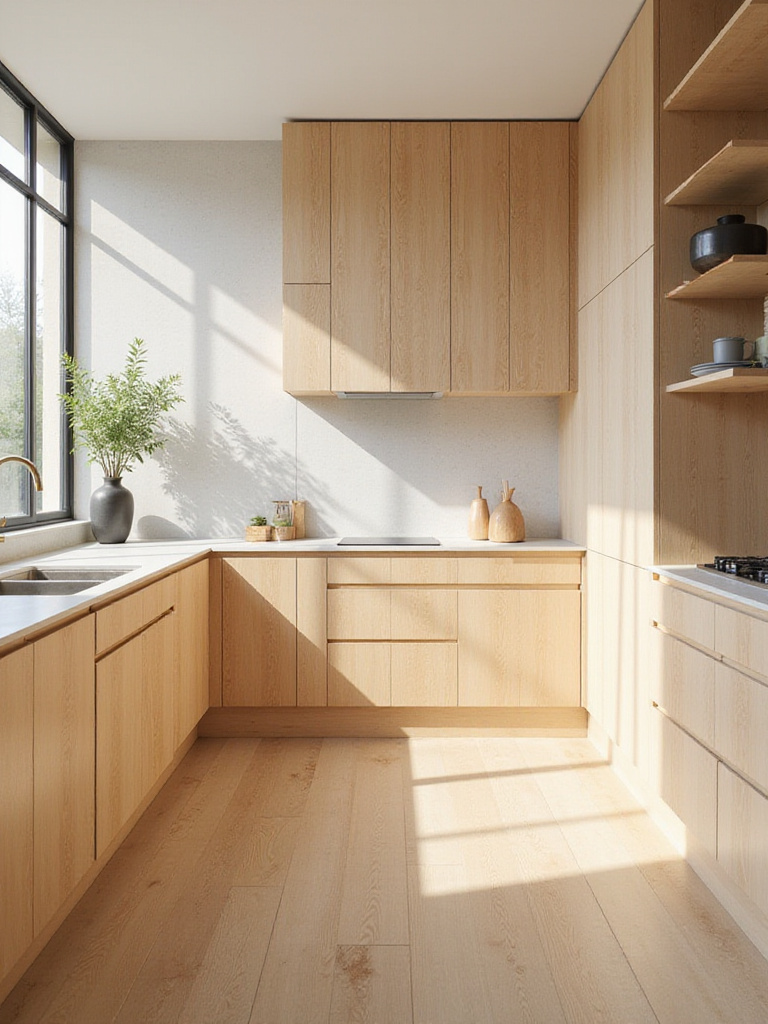
Choosing responsibly sourced wood for your kitchen cabinets is a powerful environmental statement. Forests act as crucial carbon sinks, absorbing atmospheric carbon dioxide and mitigating climate change. By supporting sustainable forestry, you actively protect these vital ecosystems from deforestation. Beyond environmental benefits, responsibly sourced wood promotes ethical labor practices and respects the rights of forest-dependent communities. This allows you to create a beautiful, functional kitchen with the peace of mind that comes from aligning your choices with your values.
The surprising part is how varied and beautiful responsibly sourced woods can be. From the light, creamy tones of maple to the rich warmth of cherry, and from the distinctive grain of oak to the unique character of reclaimed wood—sustainable options offer endless aesthetic possibilities for your organic kitchen cabinets.
Traditional cabinet finishes release volatile organic compounds (VOCs) that silently pollute your home’s air for months or even years after installation. These chemicals—including formaldehyde, benzene, and xylene—can trigger respiratory irritation, headaches, nausea, and dizziness. Long-term exposure has been linked to more serious health issues, including increased cancer risk. Traditional finishes may also contain heavy metals that contaminate the environment during production and disposal.
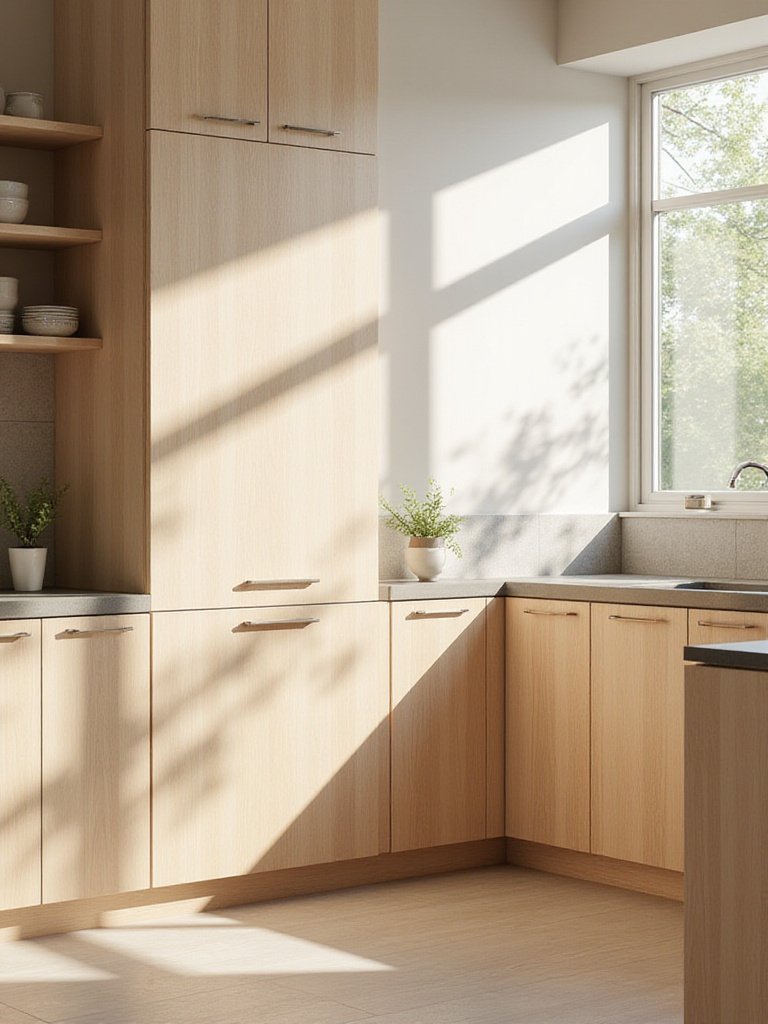
Non-toxic or organic cabinet finishes earn their designation by prioritizing both human and environmental health. Instead of harmful chemicals, they rely on natural, plant-based ingredients like linseed oil, tung oil, beeswax, milk protein, natural resins, and mineral pigments. These finishes create beautiful, durable surfaces without compromising indoor air quality. The variety of non-toxic options has expanded dramatically, now including water-based finishes, milk paint, natural oils, beeswax, shellac, and clay paints—each offering unique aesthetic qualities and protective benefits.
Let me paint you a picture of what this means in real life: imagine preparing dinner in your kitchen without breathing in harmful chemicals, or watching your children help you bake cookies without worrying about what they’re touching or breathing. That peace of mind is priceless—and it comes standard with organic kitchen cabinets finished with non-toxic materials.
VOCs (Volatile Organic Compounds) are gases emitted from various solids and liquids found in conventional cabinet materials. These chemicals—present in adhesives, paints, stains, and manufactured wood products—can off-gas into your home for months or even years after installation. For sensitive individuals, VOC exposure can trigger headaches, dizziness, respiratory irritation, skin rashes, and fatigue. Over time, these chemicals may contribute to or worsen existing respiratory conditions and potentially lead to more serious health issues.
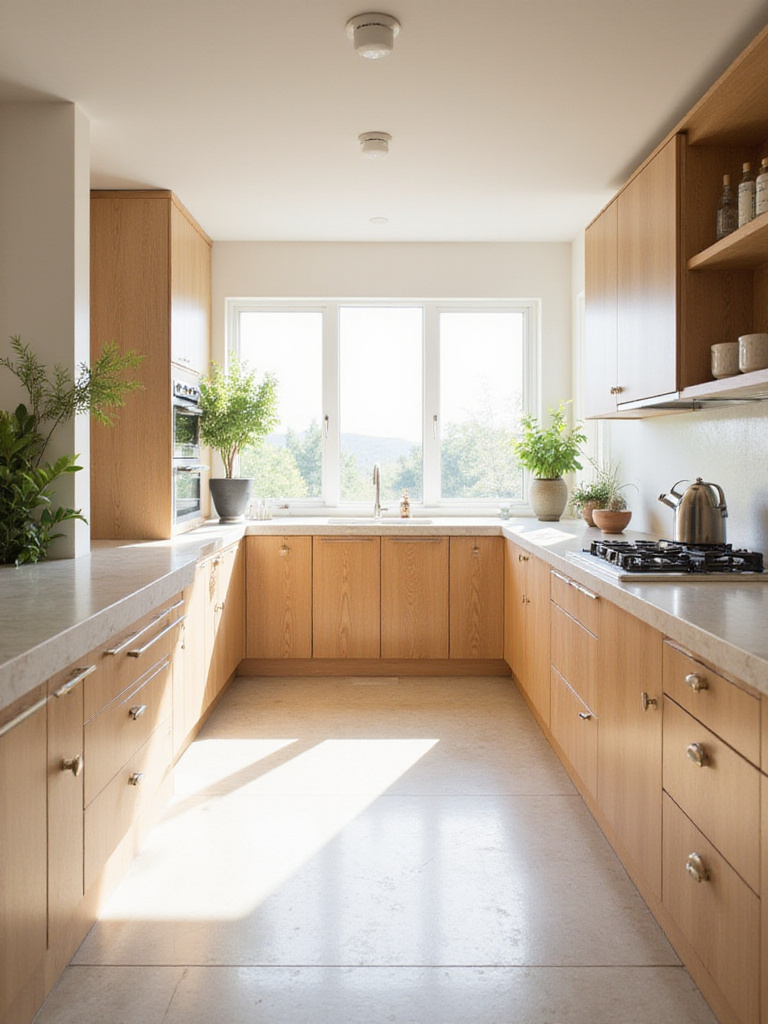
The fundamental difference between organic and conventional kitchen cabinets lies in their material composition. Organic cabinets prioritize natural, sustainable materials with minimal emissions—often using solid wood, bamboo, or formaldehyde-free plywood bonded with non-toxic adhesives. They typically feature natural oils, waxes, or water-based finishes with low or zero VOC content. Conventional cabinets, by contrast, frequently incorporate formaldehyde-based adhesives and solvent-based finishes that release significant amounts of VOCs. This conscious shift toward natural, low-emission materials in organic kitchen cabinets results in substantially better indoor air quality.
Do you see how huge that is? The cabinets that surround you every day in your kitchen—where you prepare food, gather with family, and spend countless hours—can either contribute to or help protect your health through the quality of air you breathe.
Organic kitchen cabinets often demonstrate exceptional longevity compared to conventional options. While durability depends on specific materials and construction techniques, organic cabinets frequently leverage the inherent strength of natural materials. Solid wood construction—a hallmark of many organic options—provides superior strength and resilience compared to particleboard or MDF. Solid wood better resists daily wear and tear, showing less susceptibility to sagging, warping, or moisture damage over time.
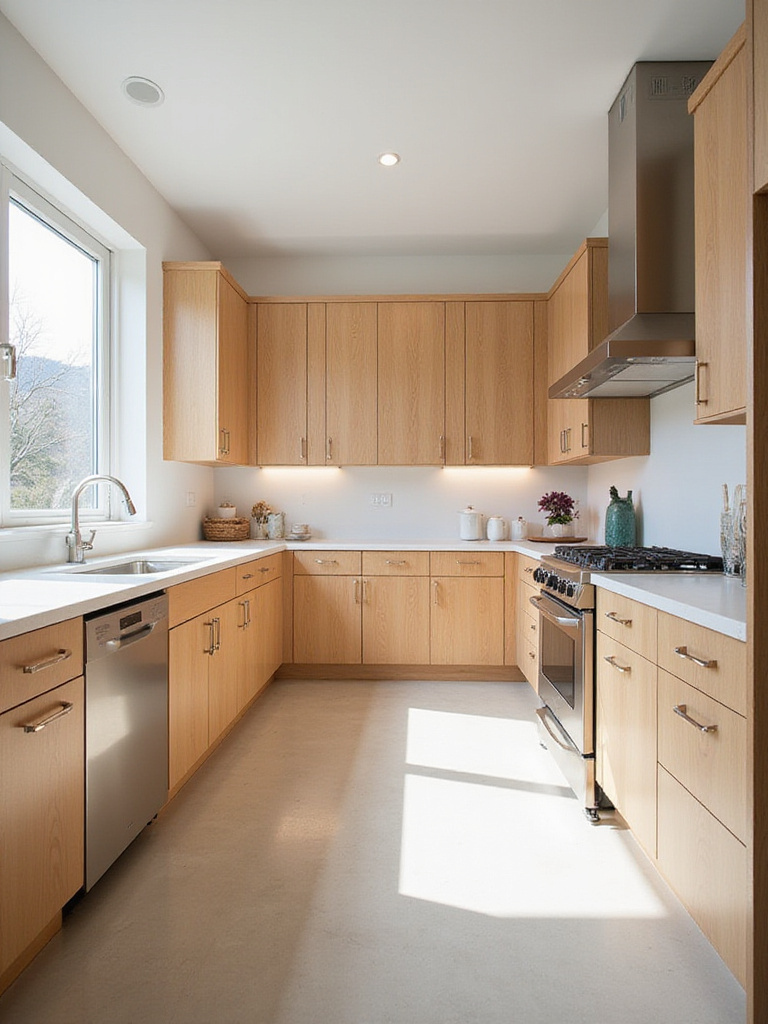
Natural finishes also contribute to organic cabinets’ durability. Unlike conventional varnishes that create a rigid surface layer, natural oils and waxes penetrate the wood, allowing it to breathe and adapt to humidity changes. This minimizes cracking and peeling, particularly important in kitchen environments with fluctuating moisture levels. While some organic finishes may require more frequent maintenance, they’re typically easier to repair if scratched or damaged, extending the cabinet’s overall lifespan and preserving its beauty for decades.
The game-changer happened as I worked with clients who returned years later for other home projects—their organic kitchen cabinets still looked beautiful while friends with conventional cabinets were already planning replacements. The initial investment in quality organic materials pays dividends through extraordinary longevity.
Organic kitchen cabinets adapt beautifully to modern kitchen designs despite misconceptions that they only suit rustic spaces. The key to achieving a contemporary look lies in embracing minimalist aesthetics and clean lines. Opt for flat-panel cabinet doors crafted from sustainably sourced wood in light or natural tones to enhance spaciousness. Pair with eco-friendly hardware in brushed nickel or matte black for a sleek finish. Consider incorporating open shelving from the same organic wood to showcase minimalist dishware without cluttering the space. This approach creates a modern kitchen that’s both stylish and sustainable.

For rustic kitchen designs, organic cabinets truly shine. Embrace the natural imperfections and textures inherent in organic wood with raised-panel doors or classic Shaker styles that evoke traditional craftsmanship. Consider reclaimed wood with its inherent character or cabinets with distressed finishes to enhance rustic charm. Complement with farmhouse-style hardware in cast iron or antique bronze. Open shelving displays vintage cookware and pottery beautifully in rustic settings. The combination creates a warm, inviting kitchen that celebrates natural materials and traditional craftsmanship.
It’s similar to how a beautiful piece of music can be interpreted differently by various musicians—organic kitchen cabinets provide the foundational notes, but you determine the style and feeling through your design choices. Whether your taste runs sleek and modern or warm and rustic, organic cabinets adapt beautifully to your vision.
Organic kitchen cabinetry offers remarkable customization possibilities, allowing you to create a truly personalized space. Choose from sustainably harvested woods like maple, cherry, walnut, or bamboo—each with unique grain patterns and characteristics. Door styles range from minimalist slab designs to classic shaker and ornate raised panels, dramatically influencing your kitchen’s aesthetic. Eco-friendly finishes including water-based stains, natural oils, and milk paints allow you to achieve your desired color while maintaining healthy indoor air. Select from organic or recycled hardware options that complement your chosen style, and incorporate customized interior storage solutions like pull-out shelves, drawer dividers, and specialized inserts to maximize functionality.
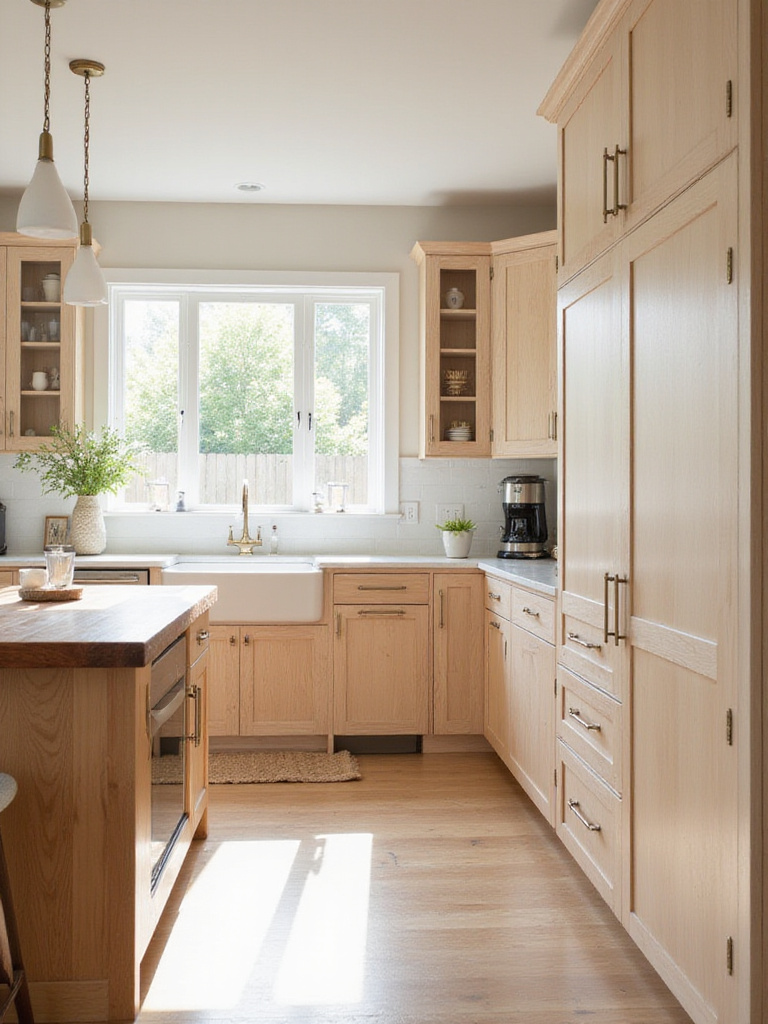
Choosing custom organic cabinetry contributes significantly to both health and sustainability. These cabinets prioritize low or zero-VOC finishes and adhesives, minimizing harmful air pollutants—particularly important for those with allergies or sensitivities. The use of sustainably harvested wood, reclaimed materials, and recycled hardware reduces environmental impact while supporting responsible forestry practices. Custom organic cabinets are built to last with superior materials and construction techniques, reducing the need for replacement and minimizing waste generation. Many custom cabinet makers also commit to ethical sourcing practices, fair labor standards, and responsible material procurement throughout their supply chain.
The heart of the matter is that custom organic kitchen cabinets allow you to align your values with your aesthetic vision—creating a space that’s not only beautiful and functional but also reflective of your commitment to health and environmental responsibility.
Natural wood grain possesses an enduring appeal that transcends fleeting design trends. Its beauty lies in inherent complexity and organic variation—a refreshing contrast to manufactured materials’ uniformity. The unique patterns, knots, and textures in different wood species tell the silent story of a tree’s growth and environment. This individuality creates an authentic connection to the natural world that resonates deeply with our innate appreciation for organic forms and textures. Unlike design trends that quickly become dated, natural wood grain’s beauty is timeless, ensuring your organic kitchen cabinets will remain stylish and inviting for decades.
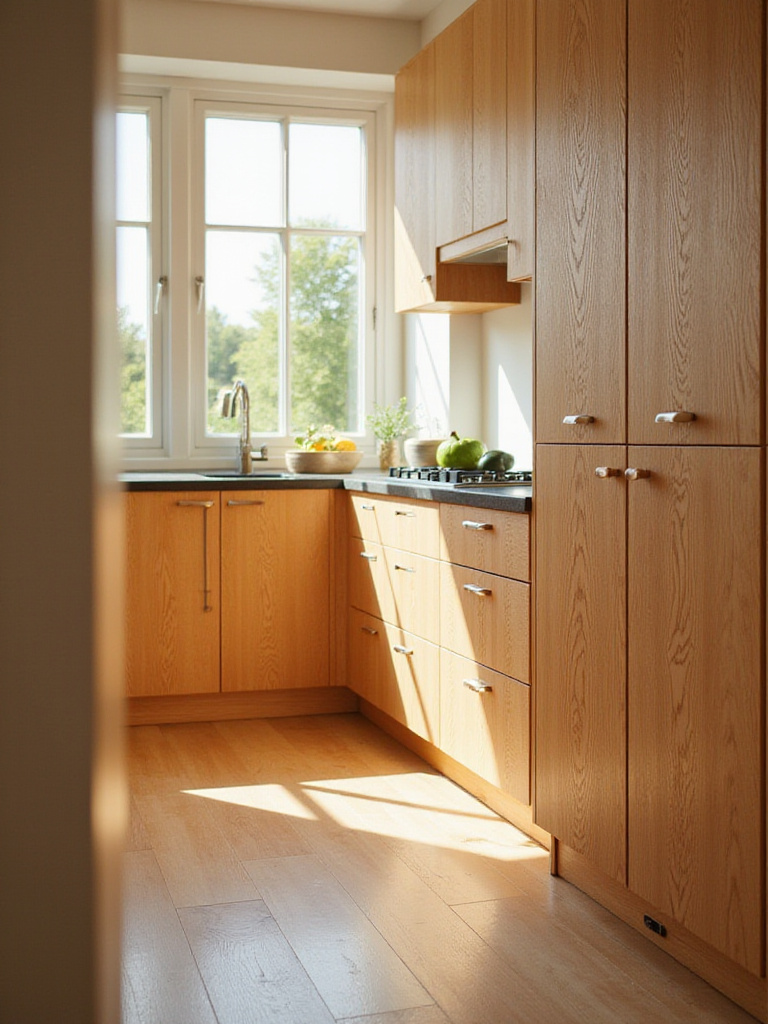
This appreciation extends beyond aesthetics to contribute to a healthier living environment. Organic cabinets showcase natural wood grain through non-toxic finishes that minimize harmful VOC exposure. The visual connection to nature provided by wood grain also offers psychological benefits—studies show that incorporating natural elements into interior spaces reduces stress and improves mood. The presence of natural wood grain in your kitchen creates a more peaceful environment, fostering tranquility and connection to the outdoors even while indoors. Several techniques can enhance wood grain’s beauty, including clear oil finishes that enrich depth while preserving texture, wire brushing to accentuate grain patterns, and intentionally highlighting natural knots and variations.
Things took an interesting turn when I visited a client’s home years after installing their organic kitchen cabinets. While other design elements had been updated, the cabinets’ natural beauty remained the anchor of the space—proving that nature’s artistry truly is timeless.
Choosing organic kitchen cabinets contributes significantly to a more sustainable future through multiple avenues. By supporting sustainable forestry practices, you help reduce deforestation and encourage responsible forest management—ensuring the health of vital ecosystems. Organic cabinets crafted with low-VOC or zero-VOC materials minimize indoor air pollution, creating healthier home environments. Many organic cabinet manufacturers also prioritize ethical labor standards, including fair wages and safe working conditions throughout their supply chains. Ultimately, your choice represents a vote for a more environmentally and socially conscious industry—an investment in a future with minimized resource depletion, protected ecosystems, and healthier homes.
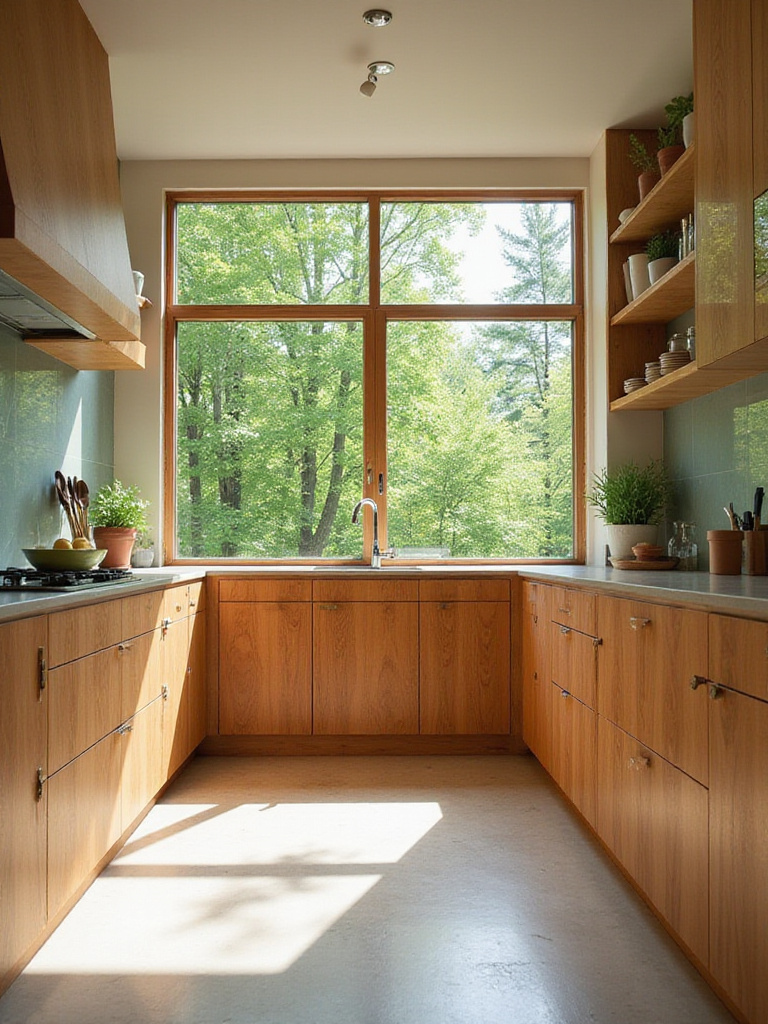
To ensure your organic kitchen cabinets truly align with sustainability and ethical production, look for specific certifications from reputable organizations. Forest Stewardship Council (FSC) certification guarantees wood from responsibly managed forests. GREENGUARD Gold Certification verifies low chemical emissions for healthier indoor air. Fair Trade Certification ensures fair wages and safe working conditions, while B Corp Certification indicates a company meets high standards of social and environmental performance. Thorough research is essential—explore company websites for information on sustainability policies, read customer reviews, seek independent third-party assessments, and don’t hesitate to contact companies directly with specific questions about their practices.
The breakthrough came when consumers began demanding transparency from manufacturers—now, truly sustainable brands proudly share their sourcing stories, manufacturing processes, and environmental commitments, making it easier to find organic kitchen cabinets that align with your values.
Organic kitchen cabinets offer a tangible way to reduce your carbon footprint through several key mechanisms. Their reliance on sustainably sourced wood supports responsible forest management—a crucial factor since forests act as vital carbon sinks, absorbing carbon dioxide from the atmosphere. By choosing cabinets made with sustainably harvested wood, you directly support these carbon-sequestering ecosystems. Additionally, the manufacturing process for organic cabinets typically involves fewer harmful chemicals and lower energy consumption compared to conventional production. Water-based finishes—common in organic cabinets—release significantly fewer VOCs than solvent-based alternatives, reducing pollution and energy requirements. Opting for locally sourced organic cabinets when possible further minimizes transportation emissions.
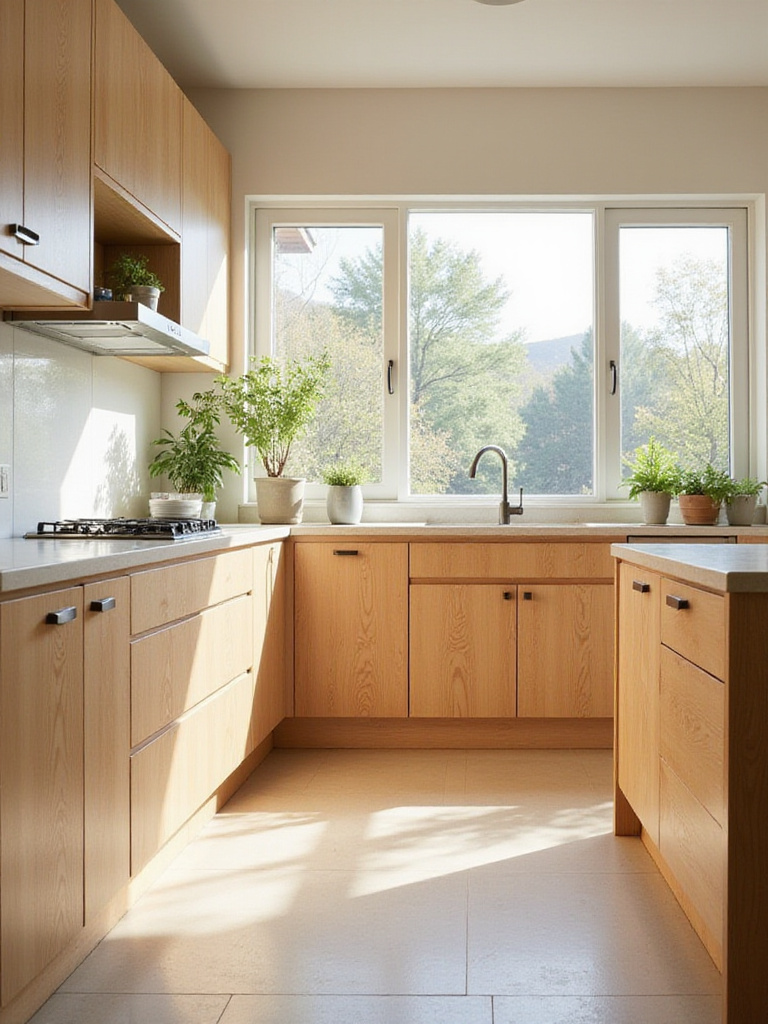
Conventional cabinets contain several materials that contribute significantly to their carbon footprint. Particleboard and MDF rely on formaldehyde-based resins derived from fossil fuels—major carbon emission sources. The energy-intensive manufacturing processes for these engineered wood products further increase their environmental impact. Similarly, the extraction and processing of metals used in hardware require substantial energy and can cause pollution during mining and production. Synthetic glues, paints, and finishes—many containing chemicals derived from fossil fuels—add to the overall environmental burden of conventional cabinets. Choosing organic alternatives with natural, renewable, and low-emission materials significantly reduces your environmental impact.
Let that sink in for a moment—your kitchen cabinet choice has ripple effects that extend far beyond your home, potentially helping protect forests that clean our air and stabilize our climate. Small choices, multiplied across thousands of homes, create meaningful change.
VOCs (Volatile Organic Compounds) pose significant concerns for individuals with sensitivities or allergies. These chemicals—commonly found in conventional cabinet materials—readily evaporate into the air at room temperature. Exposure can trigger headaches, dizziness, respiratory irritation, skin rashes, eye irritation, and fatigue. For those with asthma, chemical sensitivities, or allergies, these reactions can be particularly severe and debilitating. Prolonged exposure may contribute to or worsen existing respiratory conditions and potentially lead to more serious long-term health issues. Organic kitchen cabinets specifically designed to minimize VOC emissions create safer environments for sensitive individuals.

The material composition fundamentally differentiates organic from conventional cabinets regarding emissions. Organic options prioritize natural, sustainable, low-emission materials—often utilizing solid wood, bamboo, or formaldehyde-free plywood bonded with non-toxic adhesives. They typically feature natural oils, waxes, or water-based finishes with minimal VOC content. Conventional cabinets frequently incorporate formaldehyde-based adhesives in engineered wood products and use solvent-based paints and stains that release significant VOCs. When seeking truly “organic” cabinets for allergy-friendly kitchens, look for specific certifications like GREENGUARD Gold (ensuring rigorous testing for low chemical emissions), Formaldehyde-Free Composite certification, FSC certification (for responsibly sourced wood), and CARB Phase 2 Compliance (setting limits on formaldehyde emissions).
My experience went like this: A client with severe chemical sensitivities who had been unable to spend time in her kitchen for years wrote to me after installing organic kitchen cabinets, sharing that she could finally cook again without debilitating symptoms. These choices create life-changing differences for many people.
Maintaining organic kitchen cabinets requires gentle, natural products that preserve their beauty without harsh chemicals. Avoid abrasive cleaners, solvents, and products containing harsh chemicals that can damage finishes or release toxins. A simple solution of mild, pH-neutral dish soap diluted in warm water works excellently for routine cleaning. For a natural alternative, equal parts white vinegar and water effectively remove grease and grime. Always test cleaning solutions in an inconspicuous area first to ensure compatibility with your cabinet’s finish. For stubborn stains, a paste of baking soda and water gently applied with a soft cloth often works wonders without damaging the surface.
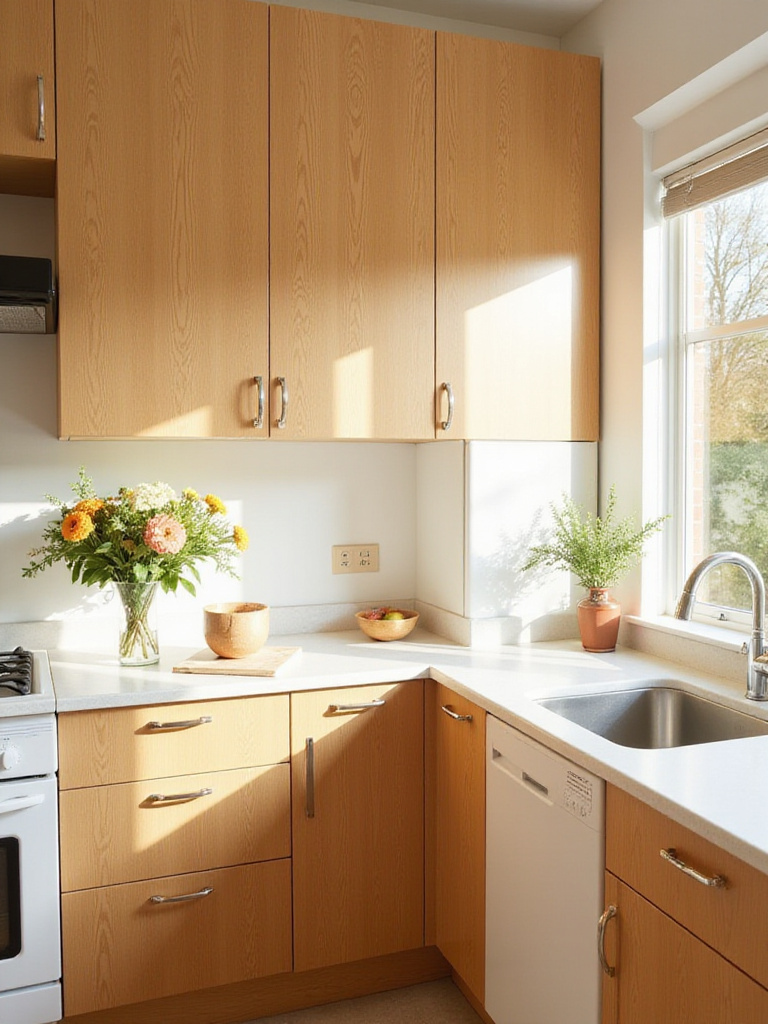
Establishing a regular cleaning routine keeps organic cabinets looking beautiful for years. Wipe cabinets weekly with a slightly damp cloth to remove dust, fingerprints, and light spills, preventing buildup. Perform deeper cleaning monthly or as needed, especially in high-traffic areas or around the stove and sink where grease and grime accumulate. Immediately address spills to prevent staining or water damage. Prevent scratches and dents by using placemats and coasters, avoiding sliding heavy objects across surfaces, adding felt pads to appliance bottoms, and installing soft-close bumpers on cabinet doors. Maintain finishes by protecting cabinets from direct sunlight, ensuring proper kitchen ventilation, promptly addressing leaks, using heat protection, and periodically applying recommended wood conditioners.
The tricky part is balancing regular maintenance with avoiding over-cleaning, which can wear finishes prematurely. With organic kitchen cabinets, a little care goes a long way—and the natural patina that develops over time often adds character and beauty that manufactured materials simply can’t match.
Organic kitchen cabinets offer compelling value-adding potential for your home, making them a smart long-term investment. They tap directly into the growing market of environmentally conscious homebuyers—particularly younger generations who increasingly prioritize sustainability in their purchasing decisions. These buyers often willingly pay premium prices for homes with eco-friendly features, positioning organic cabinets as a desirable upgrade. The superior quality and durability of these cabinets, often crafted from high-quality, locally sourced materials, ensures longer lifespans than conventional options. This longevity translates to lower lifetime ownership costs—an attractive selling point for value-conscious buyers. Additionally, the non-toxic nature of organic materials creates a powerful marketing advantage, especially appealing to families with children and health-conscious individuals.
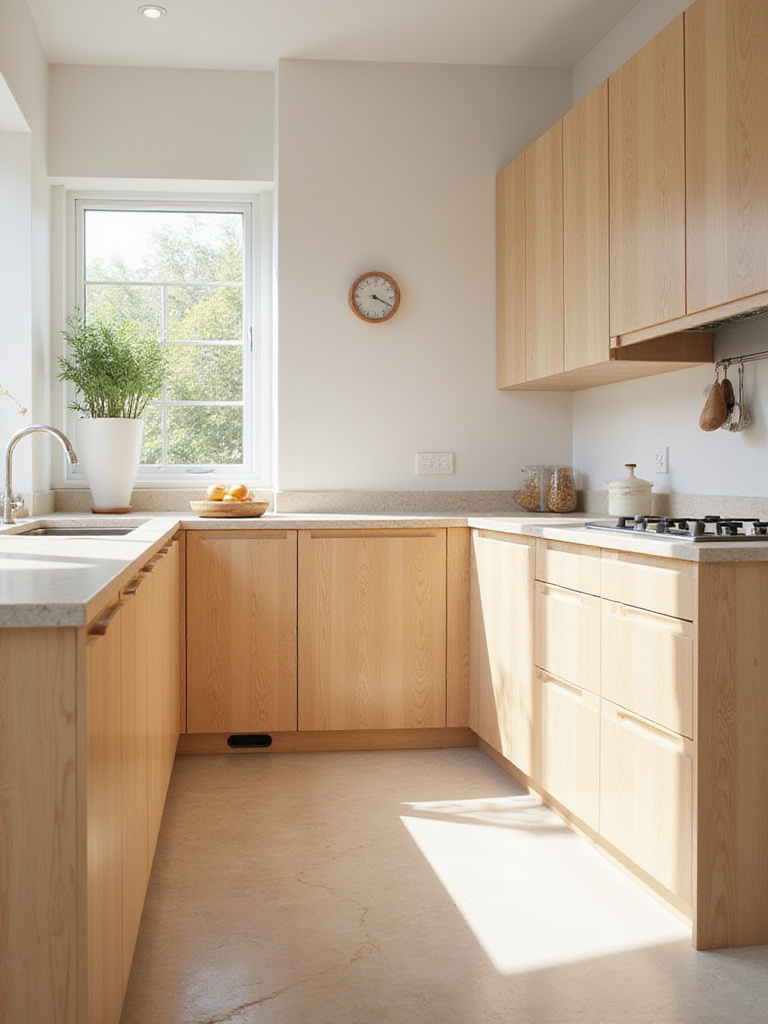
Several specific features of organic kitchen cabinets particularly enhance perceived value. Sustainably harvested wood resonates strongly with eco-conscious buyers, demonstrating environmental responsibility. Non-toxic finishes and low-VOC materials emphasize health benefits—a major selling point for families. The superior craftsmanship and design of organic cabinets, highlighting natural beauty and attention to detail, create perceptions of higher quality and superior aesthetics. The customization potential offered by many organic cabinet lines allows buyers to envision creating their dream kitchen. Documentation and certifications verifying the materials’ organic nature add credibility and reinforce the value proposition. While precise ROI figures vary based on market conditions, location, material quality, and marketing effectiveness, studies suggest potential returns ranging from 50% to 80% or higher in markets with strong demand for eco-friendly homes.
You might be wondering if the investment is truly worthwhile—but consider this: kitchens sell homes, and distinctive, health-conscious features like organic kitchen cabinets help your property stand out in competitive markets while appealing to growing segments of eco-aware buyers.
The world of organic wood options for kitchen cabinets offers remarkable diversity to suit every aesthetic preference:
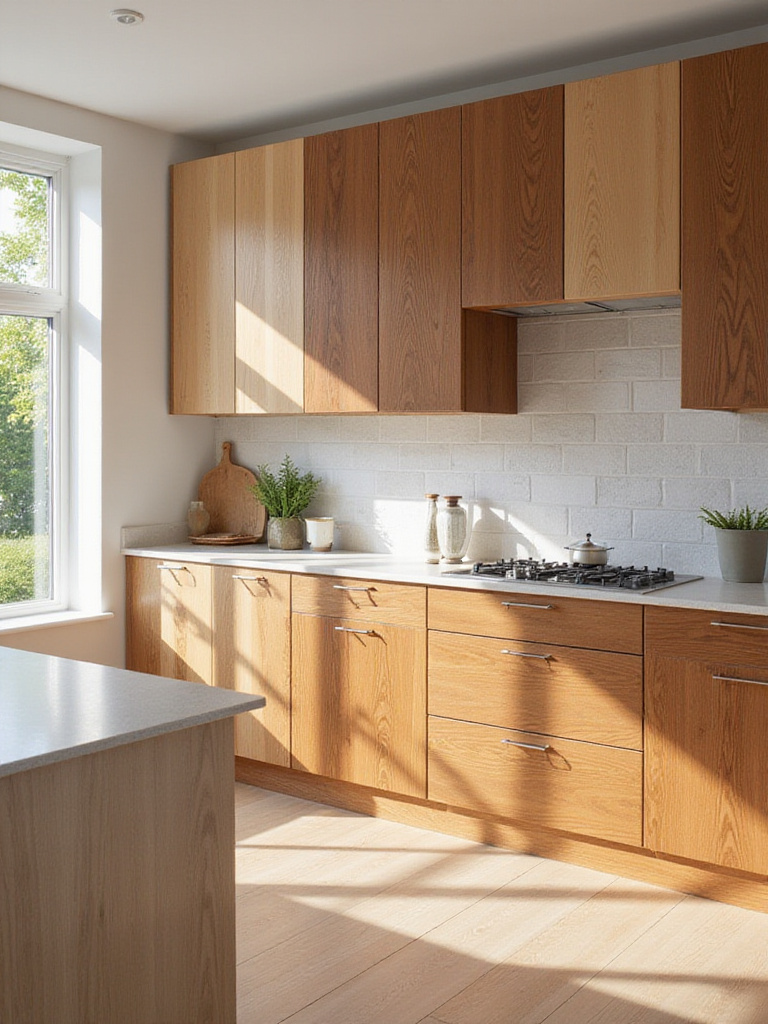
Organic finishes further enhance these woods while maintaining environmental responsibility. Water-based finishes use water as a solvent, significantly reducing VOC emissions while offering various sheens from matte to glossy. Natural oil finishes like linseed, tung, and hemp oil penetrate wood to enhance grain and provide beautiful, durable protection. Milk paint—made from milk protein, lime, clay, and natural pigments—offers a distinctive matte finish perfect for vintage or farmhouse styles. Beeswax polish provides natural protection with a soft sheen, while shellac (a natural resin) delivers durable, glossy finishes with relatively low VOCs compared to synthetic alternatives.
The key thing to understand is that organic doesn’t mean limited—quite the opposite. The range of wood species and finishes available for organic kitchen cabinets allows for extraordinary creative freedom while maintaining environmental integrity.
Bamboo and reclaimed wood represent exceptionally “organic” cabinet options due to their outstanding environmental benefits. Bamboo’s status as a rapidly renewable resource sets it apart—this remarkable grass reaches maturity in just 3-5 years compared to decades for hardwood trees. Its quick regrowth significantly reduces deforestation pressure and minimizes environmental impact. Reclaimed wood, salvaged from old buildings and structures, prevents valuable materials from entering landfills while reducing demand for newly harvested timber. When finished with non-toxic, VOC-free sealants and adhesives, these materials fully embody organic design principles, contributing to healthier, more environmentally conscious kitchens.
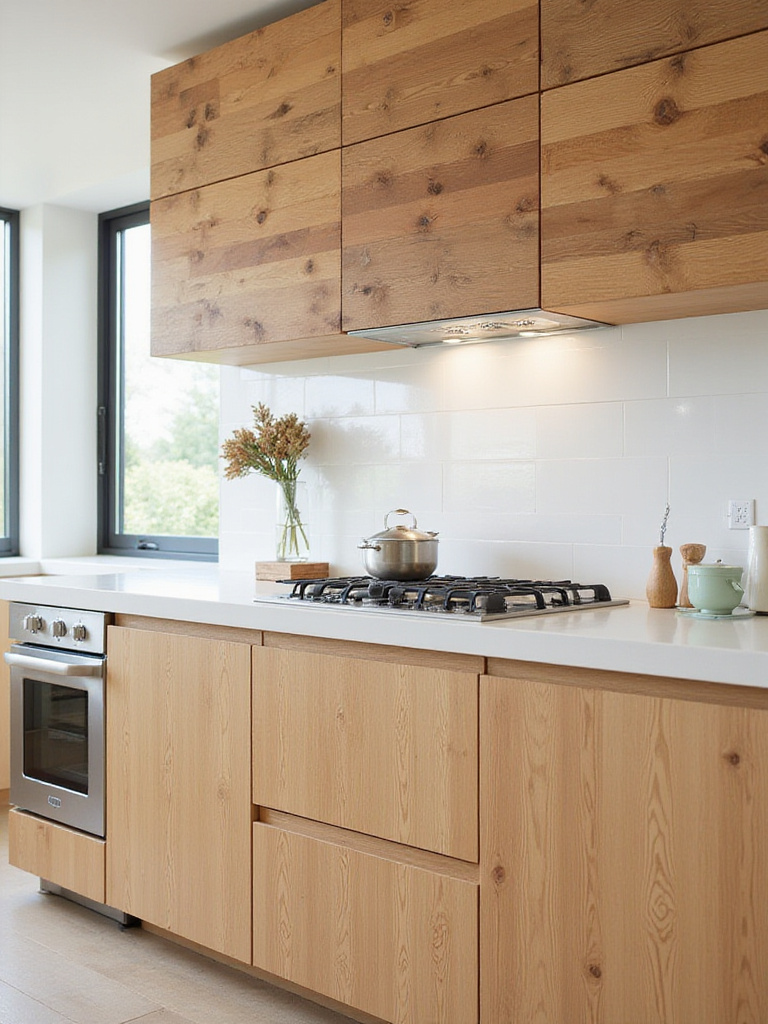
These materials offer distinct aesthetic and functional characteristics. Bamboo cabinets typically present a sleek, modern appearance with distinctive linear grain patterns. Their light color and clean lines complement contemporary and minimalist kitchen designs beautifully. Functionally, bamboo offers impressive durability and moisture resistance—though specific performance varies by species, manufacturing process, and finishing techniques. Reclaimed wood cabinets, conversely, showcase rustic, character-rich aesthetics emphasizing natural imperfections and historical details. Their unique grain patterns, knots, nail holes, and color variations tell stories of past lives, making them ideal for farmhouse, industrial, or vintage-inspired kitchens. Properly sourced and finished reclaimed wood provides strength and durability comparable to new wood, though moisture resistance may vary based on wood type and previous use.
What unfolded next was fascinating—these alternative materials began appearing in unexpected settings. Sleek, modern kitchens incorporated reclaimed wood islands for warmth, while traditional spaces used bamboo accents for contemporary touches. These materials transcend conventional design boundaries while maintaining organic integrity.
Organic paints and stains offer significant health and environmental advantages over conventional cabinet finishes. Traditional options often contain volatile organic compounds (VOCs) that off-gas into your home, contributing to indoor air pollution and potentially triggering health issues ranging from respiratory irritation and headaches to more serious long-term concerns. Organic alternatives are formulated with natural pigments and binders derived from plants and minerals, resulting in significantly lower or zero VOC emissions. This creates a healthier indoor environment while often delivering richer, more nuanced color depth and a softer, more natural appearance that beautifully complements wood’s inherent beauty.
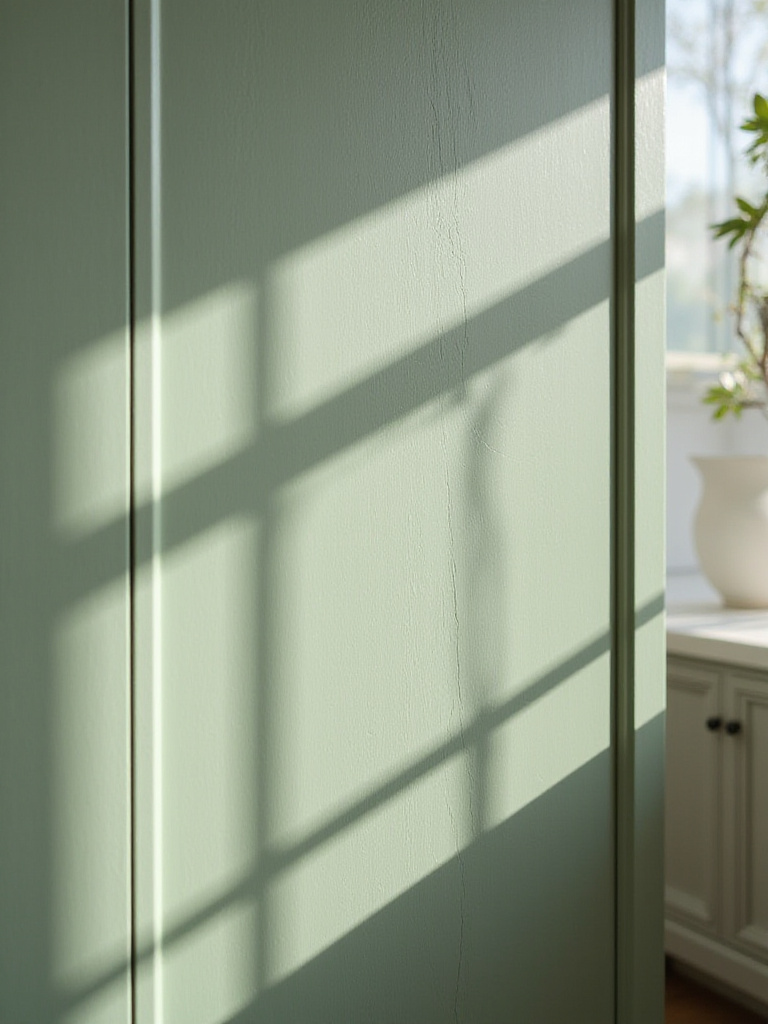
The color palette for organic paints and stains has expanded dramatically, now ranging from classic neutrals and soft whites to vibrant contemporary hues. Finish options typically include matte, satin, and semi-gloss, though achieving ultra-high gloss finishes with completely organic materials remains challenging. Modern organic formulations from reputable manufacturers now offer durability comparable to conventional options, especially when properly applied and maintained. Proper surface preparation remains crucial—thorough sanding, cleaning, and priming ensure proper adhesion and longevity. Multiple thin coats with adequate drying time maximize durability, while natural sealant or wax topcoats can enhance protection in high-use areas.
“The difference between conventional and organic finishes isn’t just about health—it’s about how the wood breathes and ages. Organic finishes allow the living quality of wood to shine through, creating a depth and character that synthetic finishes simply can’t match.” – Marcus Thompson
My breakthrough came when I realized organic finishes don’t just protect wood—they celebrate it. Unlike conventional finishes that often mask wood’s character beneath uniform coatings, quality organic finishes enhance natural beauty while providing protection, creating kitchen cabinets with soul and substance.
Professional installation is crucial for organic kitchen cabinets due to the unique properties of natural materials. Unlike synthetic alternatives, organic materials like sustainably harvested wood, bamboo, or reclaimed materials can be more sensitive to environmental factors such as moisture and temperature fluctuations. Professional installers understand how to properly acclimate these materials to your specific kitchen environment before installation—a critical step for preventing future warping, cracking, or other issues. They also know which eco-friendly adhesives and hardware work best with organic materials while maintaining your kitchen’s overall organic integrity. Their expertise ensures proper alignment and leveling, critical for smooth door and drawer function and structural soundness, while helping preserve manufacturer warranties.
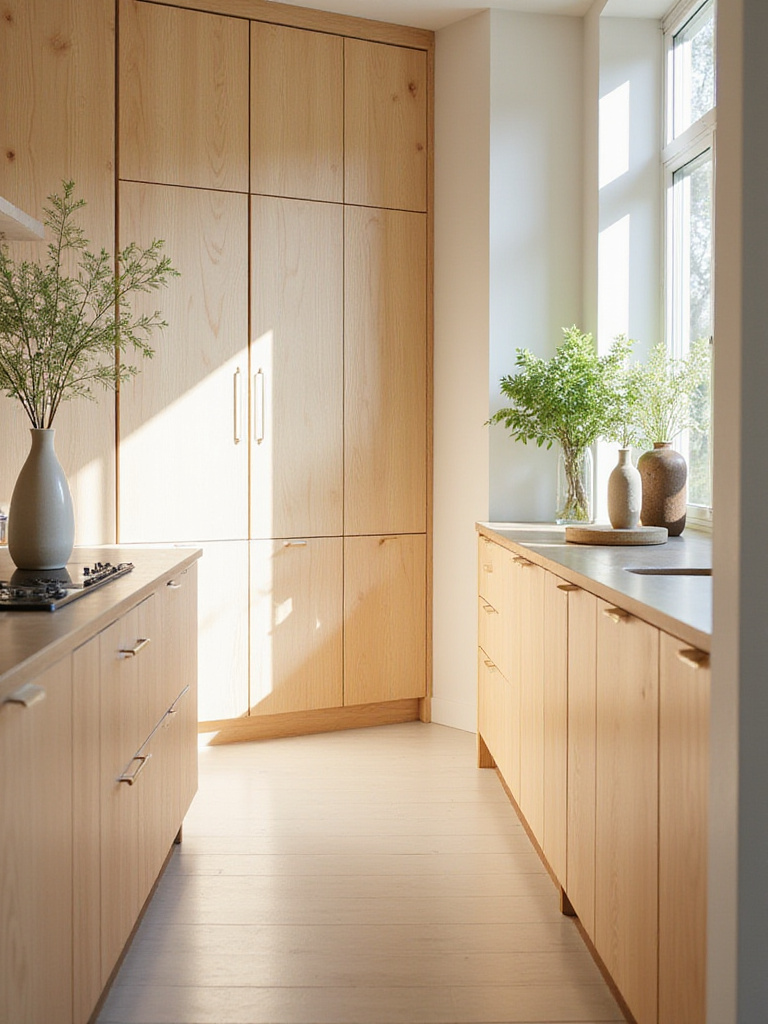
Installing organic kitchen cabinets involves several unique considerations beyond standard practices. Professionals understand the natural expansion and contraction of organic materials and employ specific techniques to accommodate this movement. They’re trained to handle delicate natural oil finishes, milk paints, or water-based stains with appropriate care during installation. They prioritize low-VOC or zero-VOC adhesives, sealants, and caulks to maintain the organic integrity of your kitchen environment. Responsible professionals also implement environmentally sound waste management practices, recycling packaging materials and minimizing environmental impact. Choosing an installer with specialized experience in organic and sustainable kitchen design brings valuable benefits—from design guidance and reputable supplier connections to proper installation techniques and potential certification assistance.
The missing piece is often expertise—while many contractors can install cabinets, those specifically experienced with organic materials understand their unique properties and requirements. This specialized knowledge transforms your organic cabinet investment from merely beautiful to truly exceptional in both form and function.
The journey through these 18 compelling reasons reveals that organic kitchen cabinets offer far more than aesthetic appeal—they represent a holistic approach to kitchen design that honors health, sustainability, and craftsmanship. From the eco-friendly materials that reduce your carbon footprint to the non-toxic finishes that protect your family’s health, these cabinets align with mindful living principles while creating spaces of extraordinary beauty.
What makes organic kitchen cabinets truly special is their ability to connect us with nature’s artistry in our daily lives. The unique grain patterns, rich colors, and natural variations in sustainable woods create kitchens with soul and character—spaces that feel alive rather than manufactured. As we become increasingly separated from the natural world, these thoughtful touches reconnect us with what matters.
By choosing organic kitchen cabinets, you’re not just designing a beautiful space—you’re making a statement about your values and creating a legacy of conscious consumption that benefits both your family and our planet. The investment pays dividends through improved health, reduced environmental impact, and the simple joy of surrounding yourself with authentic materials that tell a story and stand the test of time.